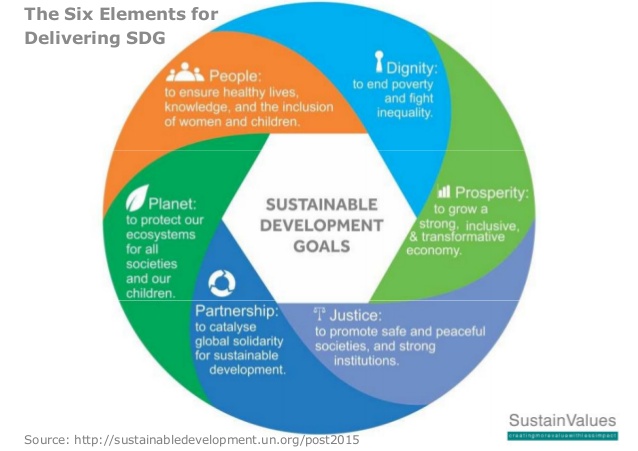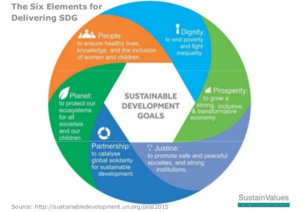The United Nation’s Open Working Group has proposed 17 goals and 169 targets as the agenda for the Summit on Sustainable Development Goals. World Leaders are set to hammer out working solutions on these agendas in September 2015. Their primary area of focus will be to figure out how to minimize marginalization and poverty from a socio-economic perspective post 2015.
In order to achieve its goals and smoothen the transition from its defined objectives to future sustainbale developments, the United Nations Development Programme (UNDP) has created a SDG Fund, with Spain being its initial main contributor. International and national partners chip in their resources so as to match that of the main contributor.
The primary objective of the SDG Fund is to bring all participants, such as corporates, national governments, civil society, academia and various UN agencies into an umbrella group which will collaborate and harmonize each other’s working so as to meet a populations basic needs and requirements, such access to affordable sanitation and water, lower worldwide poverty, and providing simple sustainable nutrition.
With each participant bringing their own set of skills and expertise to the table, it is hoped and expected that development efforts, with these technical assistances, will be spurred and targets achieved as per the agenda. To cite an example, currently 18 countries are collaborating in the challenge of inclusive economic growth, water and food security for its citizens, as well as meeting their sanitation requirements. The countries in which these sustainable development works are currently being done are Africa, Latin America, Asia, the Caribbean, and the Arab States.
Each program in the development process is assessed and reviewed by independent experts. In addition to this, local counterparts are engaged, in order to ensure that the decisions taken by the experts trickle down the implementation process without it being changed or modified. In order to ensure that the decisions taken by the experts have material on-ground benefit to the actual stakeholders more than 1500 people were made involved to that the designs envisaged by the experts are of benefit to the locals on the ground.
Also, typically in each such programs, public-private partnerships are involved and special care is taken to ensure that equal opportunity is given to both genders during its implementation process. Gender equality and empowering of women a is key for all such programs.
Typically in the past such programs have been successful because they extensively rely on the experience of development practices got through the former Millennium Development Goals Achievement Fund.
The successful implementation of these programs will ensure that future generations will be able to meet their own needs in a holistic and sustainable manner.
References:
http://www.ipsnews.net/2015/03/opinion-bridging-the-gap-how-the-sdg-fund-is-paving-the-way-for-a-post-2015-agenda/
In order to achieve its goals and smoothen the transition from its defined objectives to future sustainbale developments, the United Nations Development Programme (UNDP) has created a SDG Fund, with Spain being its initial main contributor. International and national partners chip in their resources so as to match that of the main contributor.
The primary objective of the SDG Fund is to bring all participants, such as corporates, national governments, civil society, academia and various UN agencies into an umbrella group which will collaborate and harmonize each other’s working so as to meet a populations basic needs and requirements, such access to affordable sanitation and water, lower worldwide poverty, and providing simple sustainable nutrition.
With each participant bringing their own set of skills and expertise to the table, it is hoped and expected that development efforts, with these technical assistances, will be spurred and targets achieved as per the agenda. To cite an example, currently 18 countries are collaborating in the challenge of inclusive economic growth, water and food security for its citizens, as well as meeting their sanitation requirements. The countries in which these sustainable development works are currently being done are Africa, Latin America, Asia, the Caribbean, and the Arab States.
Each program in the development process is assessed and reviewed by independent experts. In addition to this, local counterparts are engaged, in order to ensure that the decisions taken by the experts trickle down the implementation process without it being changed or modified. In order to ensure that the decisions taken by the experts have material on-ground benefit to the actual stakeholders more than 1500 people were made involved to that the designs envisaged by the experts are of benefit to the locals on the ground.
Also, typically in each such programs, public-private partnerships are involved and special care is taken to ensure that equal opportunity is given to both genders during its implementation process. Gender equality and empowering of women a is key for all such programs.
Typically in the past such programs have been successful because they extensively rely on the experience of development practices got through the former Millennium Development Goals Achievement Fund.
The successful implementation of these programs will ensure that future generations will be able to meet their own needs in a holistic and sustainable manner.
References:
http://www.ipsnews.net/2015/03/opinion-bridging-the-gap-how-the-sdg-fund-is-paving-the-way-for-a-post-2015-agenda/






